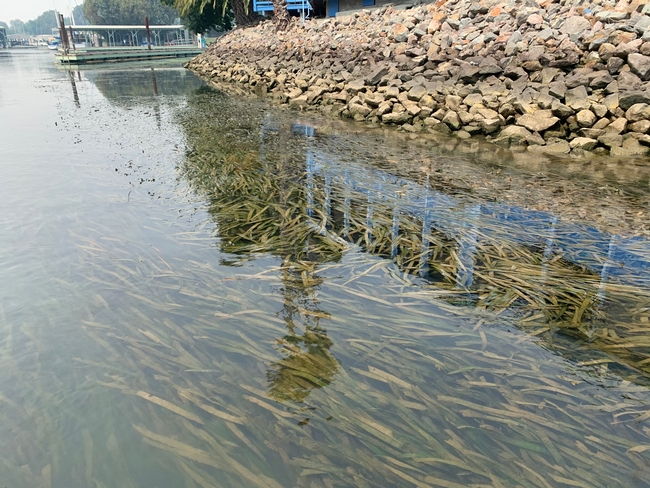A new invader was found in the Sacramento-San Joaquin River Delta (hereafter “Delta”) by California State Parks, Division of Boating and Waterways (“CDBW”). The new weed is Australian ribbonweed, Vallisneria australis S.W.L. Jacobs and Les. First described as V. gigantea, the taxonomic name has been revised to V. australis (see photos). It has multiple common names, including ribbonweed, eel grass, and others. Native to Australia, it has been spread to New Zealand, Europe, and North America. Ribbonweed is widely sold in both aquatic gardening and aquarium trades.
Ribbonweed forms fertile seed pods, but the predominant form of spread is vegetative by stolon fragments. It forms nuisance growths in irrigation canals in Australia, and invades lakes and rivers in Europe and New Zealand. In New Zealand, it is ranked as a major weed.
Ribbonweed is an herbaceous perennial submerged weed with long strap-like leaves, up to 10 feet long and 2 inches wide. It has leaves that are substantially larger than the North American V. americana, and possesses a rounded leaf tip. It is dioecious, forming separate plants that produce either pollen-bearing or ovule-bearing flowers.
In the Delta, it was found in 2018 at the northern end of the Delta in the Sacramento River. It has since been found in a number of other locations in that region. California Department of Food and Agriculture has rated Australian ribbonweed as a weed of medium concern. They have proposed a B pest weed rating in a report in October 2021, with further action pending.
Currently, no US or California herbicide efficacy information is available. Studies in Australia irrigation canals and studies in New Zealand found diquat (Reward), the dipotassium salt of endothall (Aquathol-K), and the dimethylalkylamine salt of endothall (Hydrothol 191) to be effective for control of ribbonweed. Initial trials in California by CDBW did not find diquat to be effective, but further research is needed.
